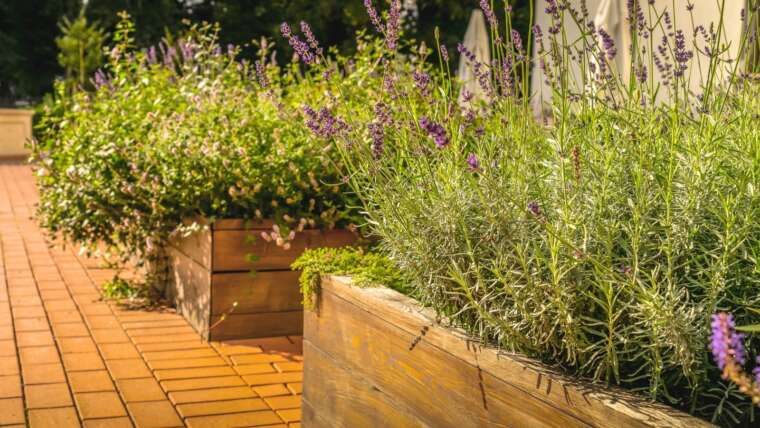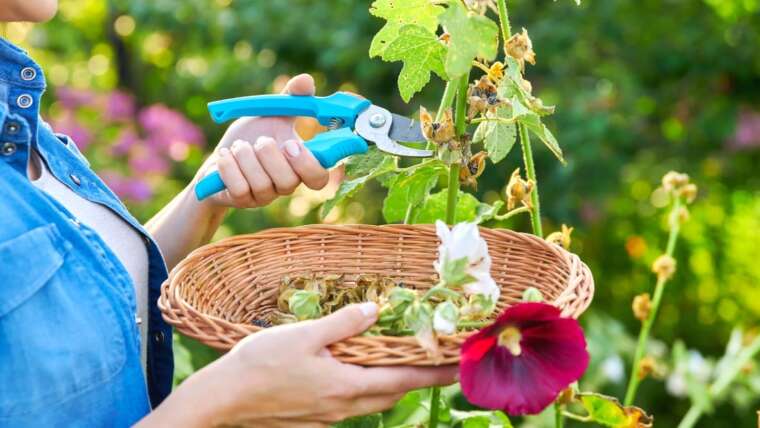In the height of summer, our gardens are full of riches to enjoy, with flowering annuals and perennials providing a profusion of color and fragrance.
If you want to enjoy annual flowers that bloom all summer, they need to be started earlier in the growing season – often as soon as the last chance of frost has passed in the spring.
However, if you missed the opportunity to start seeds earlier in the year, you will be glad to know that July is not too late to sow seeds of certain varieties.
Your USDA zone is a factor, as tender annuals will soon die off in areas with early fall frosts. However, in many areas, it is possible to plant a late-season display.
Discover the most beautiful speedy blooms that will enable you to enjoy a splash of color from late summer into fall.
1. Zinnias
(Image credit: Alamy)
Cheery zinnias can be planted until the end of July in most climates. They take about 8 weeks to flower, so can be enjoyed in the fall, until the frosts hit.
Sow seeds directly into a flower bed with a full sun aspect, as roots do not like to be disturbed. Keep the soil moist, but not soggy, and thin seedlings according to the seed packet instructions – plant spacing varies considerably depending on the types of zinnia.
Pinching back plants for bushier growth, and deadhead flowers regularly to promote more blooms.
2. Calendula
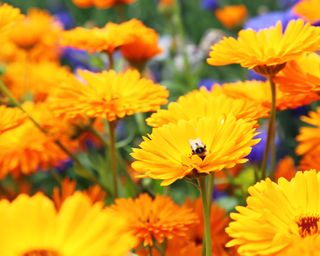
(Image credit: Getty Images)
Calendula takes just 6-8 weeks to grow from seed and the flowers are fairly cold hardy. When planted in July, they make a lovely addition to the garden in late summer and fall.
The edible flowers can be harvested to add a spicy saffron-like flavor to dishes. They are also a deterrent to some pests, making them one of the most popular companion plants for vegetable gardens.
Sow seeds directly into poor to average, well-draining soil – they are suitable for full sun to shadier locations.
Calendula thrives on minimal care – water occasionally after plants are established. Pinch out stalks to prevent spindly plants, and regularly deadhead spent flowers.
3. Sweet Alyssum
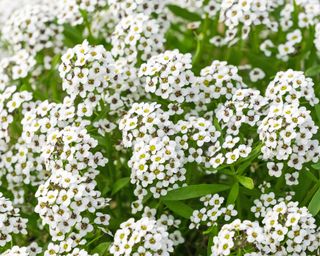
(Image credit: Getty Images)
Delicate, lacy sweet alyssum flowers add a romantic touch to gardens and are loved by pollinators.
They are some of the fastest-growing flowers, taking as little as four weeks to grow from seed.
Plants need plenty of sunlight but dislike high summer heat, so try to provide a site that offers some afternoon shade. Growing in higher shade levels is possible, but will result in leggier growth.
Sweet alyssum can be grown in various soil types and requires regular watering.
4. Nasturtium
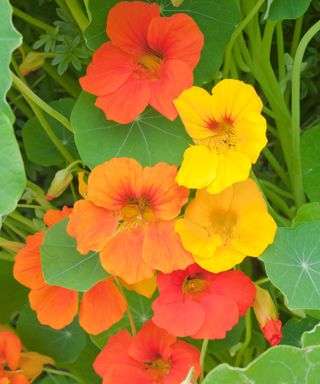
(Image credit: Alamy)
Nasturtium flowers are old-fashioned favorites that are true multitaskers. Not only are they attractive in borders and containers, but the plants are fully edible – possessing a slightly peppery flavor – and make excellent companion plants on the vegetable plot.
They are easy to grow from seed, taking just 4-6 weeks to flower. Plants may be climbing, trailing, or bushy.
Sow seeds in their final position in beds or containers with enough depth to accommodate plenty of root growth.
Nasturtiums are low-maintenance plants that thrive with minimal intervention and poor soil. Overly fertile soil results in all foliage and few flowers.
5. Black-Eyed Susan
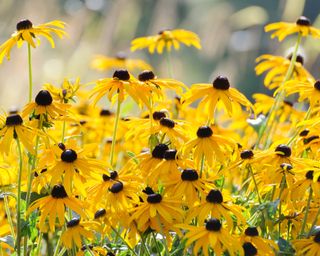
(Image credit: Getty Images)
Black-eyed Susan – or rudbeckia – is a versatile plant with sunny daisy-like blooms that add beautiful color to the late summer and fall garden.
It takes 2-3 months to grow them from seed, but most gardeners can get away with sowing as late as July.
Black eyed Susan is drought resistant, heat-tolerant, and self-seeding. It is compatible with a variety of soil types, but thrives in a neutral soil pH and a full sun to light shade location.
Plants are low maintenance, but deadheading black eyed Susan will stop plants going to seed, encourage more flowers, and keep a tidier plant.



